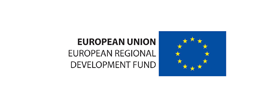|
Project summary
|
|
|
The AiD Project is being accomplished single-handedly by National Centre for Nuclear Research (NCBJ) in Świerk. The project idea is to construct some hi-tech systems based on particle accelerators and ionizing radiation detectors, mainly detectors of photons and neutrons. The idea was backed up by a significant scientific potential of the NCBJ Centre, pretty unique in Poland and highly valued throughout the world. The potential reflects and/or results from a constant development of technology ensuing from research conducted in NCBJ in co-operation with other R&D centres in Poland and abroad. Target applications for the developed systems belong to such essential fields as medicine or national border protection. The Project consists in developing the following models that would demonstrate feasibility of the innovative systems:
Once the Project is concluded the developed systems are to be deployed as market products. Ad. 1 Increasing terrorist threats call for ever more sensitive techniques that might be used to protect our borders, including detection of smuggled strategic materials and/or technologies. Efficiency of detecting illegal trafficking must be increased since traffic intensity is constantly growing. Potential losses causes by even single act of terror might be huge, therefore such systems should find their application at container shipment ports, large railway nodes, border checkpoints. Poland joined the Schengen Treaty on December 21, 2007 and became Treaty area borderland. Therefore checks executed at Polish east/north borders that are also Schengen Treaty area borders must be tightened. In view of growing terrorist threat in Europe more modern border control methods and smuggling detection equipment must be sought for and developed. According to the solution proposed by NCBJ within this Project, the passing cargo would be simultaneously scanned by various beams of ionizing radiation. The solutions have been consulted with International Atomic Energy Agency in Vienna. Once deployed, such systems should help to achieve a totally new quality level of border control. Ad. 2 Increasing number of cancer cases in population on one hand, and radiotherapy efficiency/effectiveness in many of those cases on the other hand combine into a need to develop radiotherapy equipment on possibly high technology level that would provide state-of-the art functionality and total safety both for the patients and personnel. Demand for such equipment is expected to surge, especially in developing countries where history of applying medical accelerators to treat cancer cases is relatively short. |








